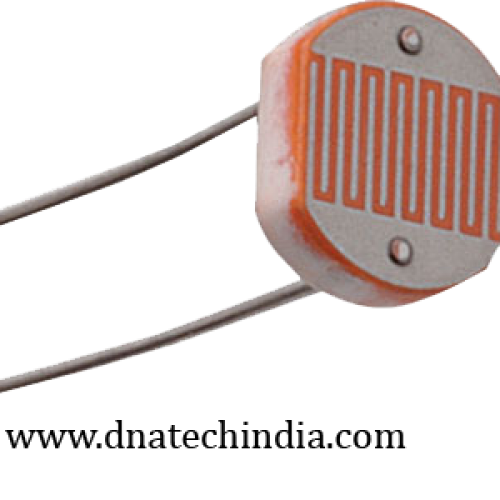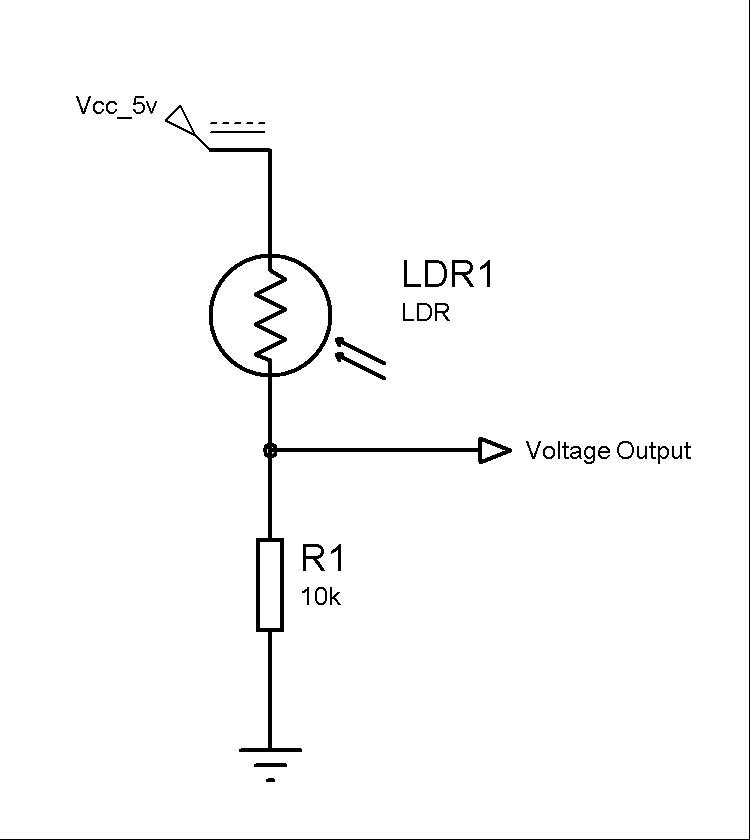Light Sensor: Light Dependent Resistor (LDR)
Light Sensor: Light Dependent Resistor (LDR)
 Various types of Light Sensors are available in the market. One of the most common type & cost effective type of Light sensor is a Light Dependent Resistor abbreviated as LDR. A LDR is also called as photo resistor or photocell. It is basically a variable resistor whose resistance varies according to the light intensity falling on it. The resistance of the LDR can be few Mega Ohm’s (MΩ) in dark conditions, and in Light condition the resistance can be of several hundred ohm’s. LDR’s are less sensitive to lights as compared to photo-transistors or Photo-diodes. Photo-transistors or Photo-diodes are active components with P-N Junction whereas the LDR is a passive component. The ZigZag Pattern of the LDR on the ceramic Substrate increases the dark resistance.
Various types of Light Sensors are available in the market. One of the most common type & cost effective type of Light sensor is a Light Dependent Resistor abbreviated as LDR. A LDR is also called as photo resistor or photocell. It is basically a variable resistor whose resistance varies according to the light intensity falling on it. The resistance of the LDR can be few Mega Ohm’s (MΩ) in dark conditions, and in Light condition the resistance can be of several hundred ohm’s. LDR’s are less sensitive to lights as compared to photo-transistors or Photo-diodes. Photo-transistors or Photo-diodes are active components with P-N Junction whereas the LDR is a passive component. The ZigZag Pattern of the LDR on the ceramic Substrate increases the dark resistance.
LDR has no polarity just like a resistor. The resistance of LDR can be very easily measured by just connecting the two terminals of LDR to a multimeter & set the multimeter on resistance Mode. Now when you change the intensity of light falling on the LDR you can see the resistance varying. LDR is available in various sizes e.g. 5mm LDR & 12mm LDR where the substrate of the LDR is 5mm wide and 12mm wide respectively.
The resistance of LDR can be different for different LDR’s and is dependent on the light sensitive material used making it. Several different materials are used as semiconductor substrate for different applications. For mid-infrared spectral region Lead sulphide (PbS) and indium antimonide (InSb) are used. For infrared region used in infrared astronomy and infrared spectroscopy Ge:Cu photo conductors are used. And the most commonly used is Cadmium Sulphide (CdS) because it is inexpensive and is sensitive to wavelength range from 400nm – 850nm i.e. the visible spectrum.
The CdS LDR is a very low cost sensor and is used in lot of day to day applications ranging from turning Street lights ON/OFF, Dusk dawn switch, LED emergency Lights to camera light meters.
Interfacing Circuit for LDR

The output of LDR is
resistance hence it cannot be connected directly to any ADC. So a voltage
divider circuit has to be constructed. You can see a simple voltage divider circuit
whose output voltage is proportional to the light intensity of the light
falling on the LDR. This output voltage can then be given directly to an ADC to
measure the light intensity or to a comparator circuit.
Vout= Vin x (R1/(R1+RLDR))
Vout = Output Voltage of
Voltage Divider Section
Vin = Input Voltage of
Voltage Divider Section in our condition its 5 Volts
RLDR= Resistance of LDR
Circuits Based on LDR
Advantages of LDR
- Low cost & Easily Available
- Easy to Use.
Disadvantages of LDR
- Slow Response time as Compared to Photo Diodes.
 Various types of Light Sensors are available in the market. One of the most common type & cost effective type of Light sensor is a Light Dependent Resistor abbreviated as LDR. A LDR is also called as photo resistor or photocell. It is basically a variable resistor whose resistance varies according to the light intensity falling on it. The resistance of the LDR can be few Mega Ohm’s (MΩ) in dark conditions, and in Light condition the resistance can be of several hundred ohm’s. LDR’s are less sensitive to lights as compared to photo-transistors or Photo-diodes. Photo-transistors or Photo-diodes are active components with P-N Junction whereas the LDR is a passive component. The ZigZag Pattern of the LDR on the ceramic Substrate increases the dark resistance.
Various types of Light Sensors are available in the market. One of the most common type & cost effective type of Light sensor is a Light Dependent Resistor abbreviated as LDR. A LDR is also called as photo resistor or photocell. It is basically a variable resistor whose resistance varies according to the light intensity falling on it. The resistance of the LDR can be few Mega Ohm’s (MΩ) in dark conditions, and in Light condition the resistance can be of several hundred ohm’s. LDR’s are less sensitive to lights as compared to photo-transistors or Photo-diodes. Photo-transistors or Photo-diodes are active components with P-N Junction whereas the LDR is a passive component. The ZigZag Pattern of the LDR on the ceramic Substrate increases the dark resistance.



